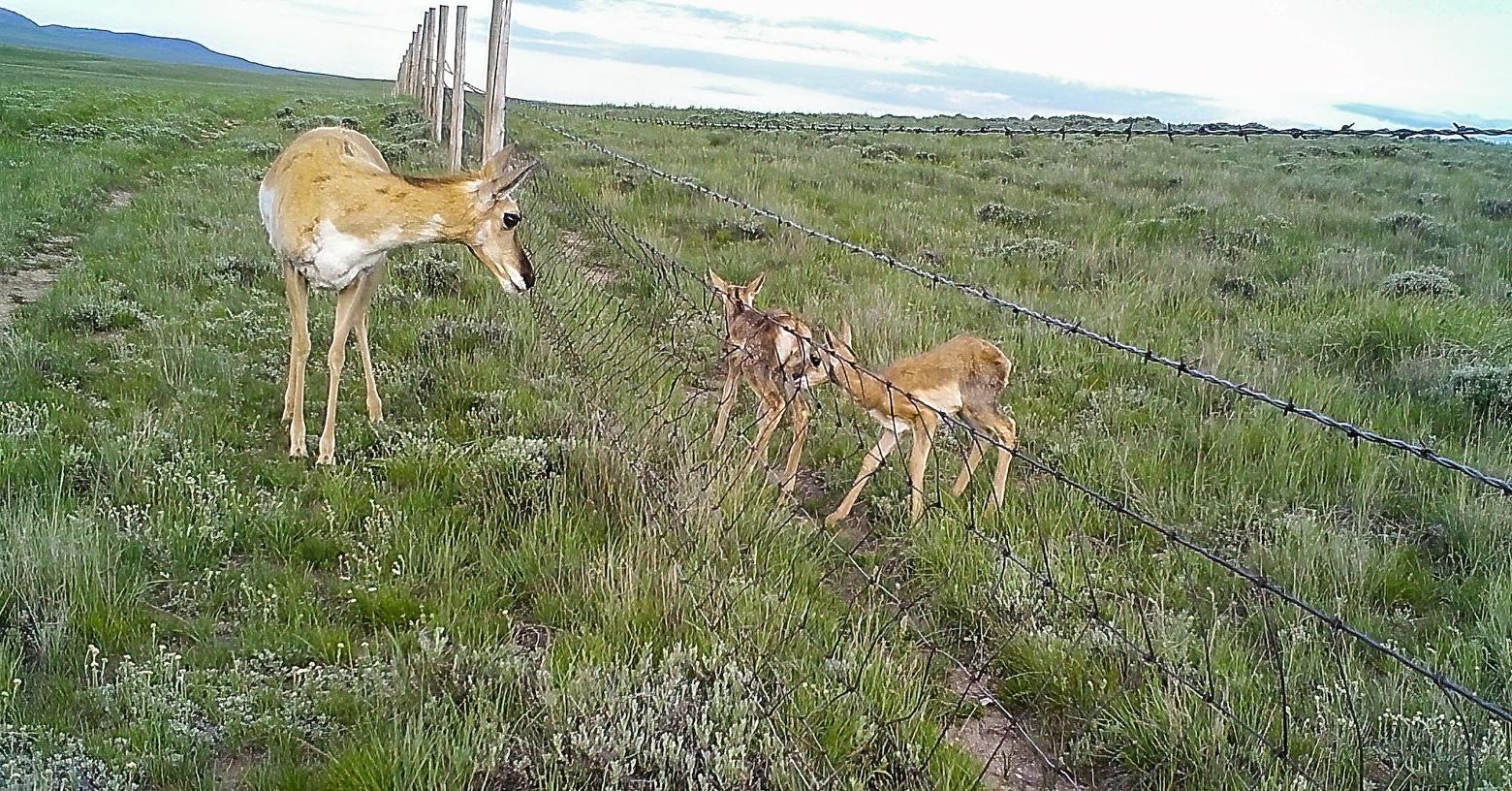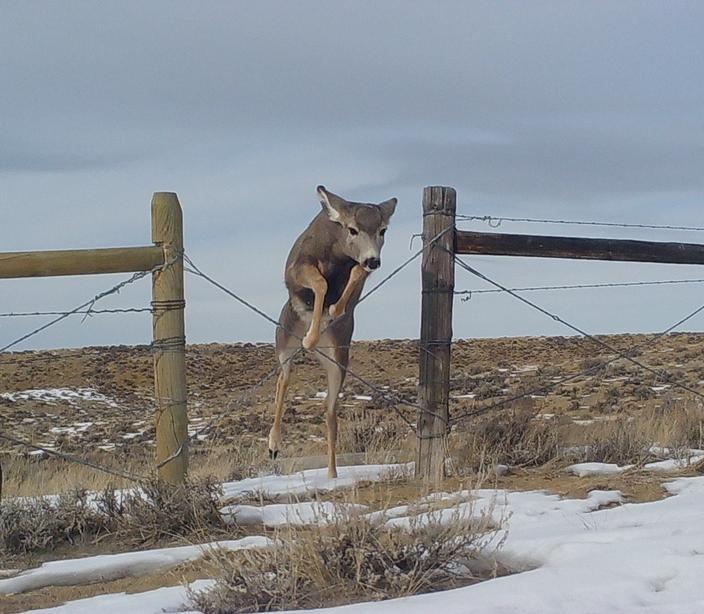Back to StoriesWyoming Wildlife: Game and Fish Releases Revised Fencing Guide
May 21, 2025
Wyoming Wildlife: Game and Fish Releases Revised Fencing GuideThird edition of landowner handbook reflects updates in research, wildlife-friendly fencing
by Sophie Tsairis
When a cow elk and her calf encounter fencing along their journey, the difference between life and death may come down to a few inches of clearance.
Fences can block wildlife access to essential water and food sources, inhibit access to seasonal habitat, and interfere with migration paths. Barbs and wires can snare legs and antlers, leaving animals with scars, broken bones, strained muscles, torn ligaments, and infections that drastically reduce their ability to survive. They can cause entanglement and injuries that are crippling, if not deadly. Ungulates, birds and other wildlife trapped or impaled by fences and unable to escape often die from trauma and stress.
An updated handbook has recently been released in hopes of alleviating these issues. In April, the Wyoming Game and Fish Department, alongside a long list of statewide government and nonprofit organizations, published the third edition of "Wyoming Landowner's Guide to Fences and Wildlife," offering updated solutions for wildlife-friendly fencing.
On its website, Game and Fish references research conducted at Utah State University from 2004 to 2005 to demonstrate how fences can impact wildlife. The study examined fence-related ungulate fatalities by systematically monitoring fencelines on foot and by vehicle to record deer, pronghorn and elk deaths. The findings revealed that fence entanglement claimed the life of one ungulate annually per 2.5 miles of fencing along Colorado and Utah roadways the researchers studied.
Despite these grim statistics, promising developments offer a safer future for wildlife. Alternatives to traditional fences, including new technology and innovative designs, are increasingly available to landowners as tools to ensure their property boundaries don't become hazardous barriers.In an April 28 press release, Game and Fish wrote that the revision reflects the agency's “ongoing commitment to coexistence between agriculture and wildlife.”
Jill Randall, Game and Fish migration coordinator told Mountain Journal that the new document updates recommended fence specifications based on scientific studies published after the first and second versions of the guide were released. The handbook also includes a new section on fence-crossing structures and gates and a section on emerging technology like virtual fencing, among other updates.
One notable change is recommended wire height: The newest guide advocates for dropping the maximum height of the top wire from 42 inches to 38 inches and increasing the height of a bottom smooth wire from 16 inches to 18 inches.
“Fortunately, we have plenty of examples working with livestock producers that indicate these changes are still effective for managing livestock,” Randall said in an email. “There has been a great deal of interest in converting fences to wildlife friendly specifications. Landowners and wildlife managers have been partnering on these win-win projects that are beneficial to both interests.”
Randall said interest has grown consistently with funding opportunities for research and to provide resources like this for landowners, but isn’t sure how long this will be the case. “There is a great deal of uncertainty with changes in federal funding opportunities, but we are hopeful that programs which benefit both wildlife and agriculture will continue to move forward.”
Free printed copies of the guide are available at Game and Fish regional offices and through various partners throughout the state.
__________________________________________________________________________________________________
Mountain Journal is a nonprofit, public-interest journalism organization dedicated to covering the wildlife and wild lands of Greater Yellowstone. We take pride in our work, yet to keep bold, independent journalism free, we need the support of readers like you. Thank you.
Related Stories
March 26, 2024
Taking Account of Gallatin County
Officials are seeking public input to inform
Future Land Use Map and Housing Strategy.
November 19, 2024
High Density of Free-Roaming Horses Linked to Decline of Greater Sage-Grouse
A recent study explores the detrimental
effects of large horse populations on chicks and juvenile birds.
January 10, 2025
Yellowstone and Grand Teton: What’s in a Timed Entry?
While
some national parks are implementing a timed visitor entry to mitigate
congestion, the nation’s first and its 18th are keeping it old
school.
...






